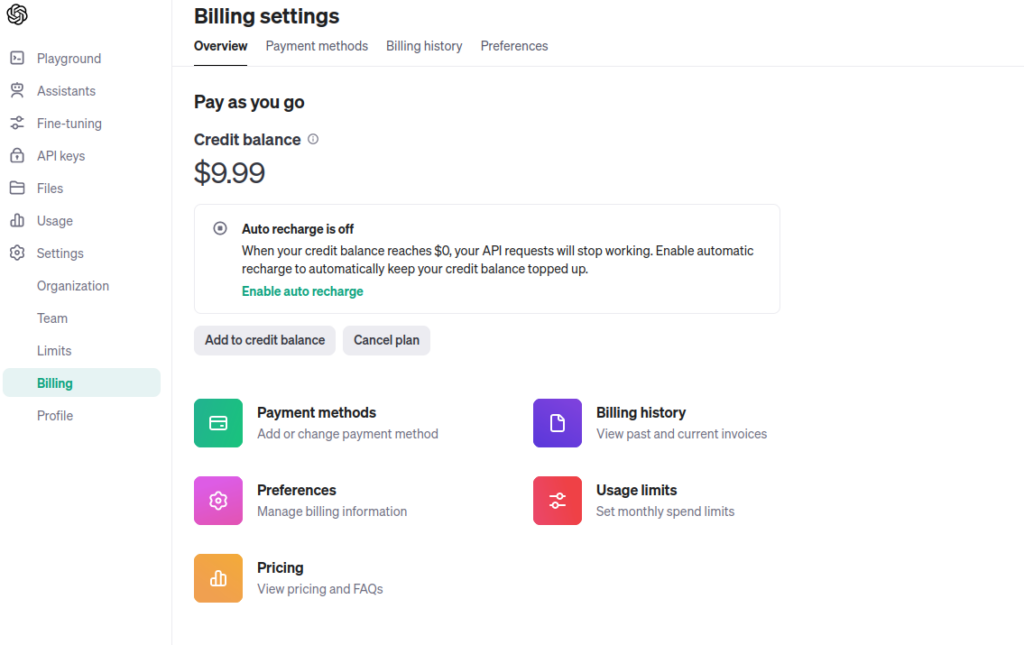The gig economy is reshaping how we work, offering flexibility and opportunities for many. From freelance designers to delivery drivers, this modern approach to work is changing the landscape of employment. It’s a complex system with advantages and disadvantages for both workers and businesses, and understanding its intricacies is crucial for navigating this evolving world of work.
This overview explores the gig economy’s various facets, from its definition and historical context to its impact on workers, businesses, and the legal landscape. We’ll examine the role of technology, future trends, and case studies to provide a comprehensive understanding of this rapidly changing job market.
Defining the Gig Economy
The gig economy, a rapidly evolving labor market, is characterized by project-based work and short-term contracts rather than traditional full-time employment. This model, powered by digital platforms, connects workers with clients for specific tasks or projects, offering flexibility and potential independence. It’s fundamentally reshaping the way people work and businesses operate.
The gig economy’s roots trace back to the rise of freelance work in the 20th century, but its recent explosive growth is largely due to the proliferation of online platforms. These platforms facilitate the matching of workers with clients, streamlining the process and allowing for a global reach. This evolution has created a diverse landscape of work opportunities, challenging traditional employment models and impacting various sectors.
Key Characteristics of Gig Work
The gig economy is built on a foundation of flexibility and independence. Workers typically control their schedules, project selection, and rates, leading to a more personalized approach to work. This flexibility is attractive to many, but it also presents unique challenges, like unpredictable income and the need to manage various projects simultaneously.
Types of Gig Work
The gig economy encompasses a wide array of work arrangements. Freelance work, often involving independent contractors, is a cornerstone of this sector. Contract work, encompassing various short-term projects or engagements, also plays a significant role. Platform-based work, facilitated by digital marketplaces, further diversifies the gig economy, with tasks ranging from driving and delivering goods to providing services like tutoring or design work.
Gig Economy vs. Traditional Employment
The gig economy contrasts sharply with traditional employment models in several key aspects. Traditional employment typically involves a fixed salary, benefits, and a defined work schedule, whereas gig work often lacks these advantages, leading to significant differences in compensation, benefits, and job security.
| Feature | Gig Work | Traditional Employment |
|---|---|---|
| Compensation | Project-based or hourly pay, potentially variable income | Fixed salary, typically monthly or bi-weekly |
| Benefits | Often no health insurance, retirement contributions, or paid time off | Usually includes health insurance, retirement plans, and paid time off |
| Job Security | Dependent on securing new projects or clients | More stable job security, with defined employment contracts |
| Work Schedule | Flexible, often self-managed | Typically fixed hours and days |
| Skills Required | Highly specialized skills for specific tasks | Broader range of skills and adaptability required |
Impact on Workers
The gig economy offers a unique set of opportunities and challenges for workers. While flexibility and potential for higher earnings are attractive aspects, workers also face potential instability and limited protections. Understanding the complexities of this dynamic environment is crucial for evaluating its impact on individual livelihoods.
Advantages of Gig Work
The ability to set one’s own hours and work on projects that align with individual skills and interests is a key advantage. This flexibility can be particularly appealing to those seeking a balance between work and personal life or needing to accommodate other responsibilities. Some gig workers find this type of autonomy and control empowering, allowing them to pursue diverse opportunities and tailor their work schedules to fit their needs.
Disadvantages of Gig Work
Gig work often lacks the stability and benefits associated with traditional employment. The unpredictable nature of project availability and fluctuating demand can lead to income insecurity and financial instability. Workers may experience significant income variations from one period to the next, which can impact their ability to plan for the future and manage expenses. For example, a freelance writer might experience a period of high demand, followed by a lull, requiring careful budgeting and financial planning.
Financial Instability and Income Insecurity
The lack of guaranteed income is a significant concern for gig workers. Project-based work often leads to unpredictable earnings, making it difficult to budget and plan for long-term financial goals. This inherent instability can be particularly challenging for those with dependents or other financial obligations. Moreover, the absence of employer-sponsored benefits, such as health insurance or retirement plans, further exacerbates this risk.
Challenges in Accessing Benefits and Protections
Gig workers frequently lack access to the same benefits and protections as traditional employees. This includes health insurance, paid time off, and retirement savings plans. The lack of these protections can leave workers vulnerable to unforeseen circumstances and potentially create financial hardship in times of illness or injury. This lack of social safety nets is a significant concern for the well-being and security of gig workers.
Skill Development and Career Flexibility
Despite the challenges, the gig economy presents opportunities for skill development and career flexibility. Workers can gain experience in diverse fields and build specialized skills through various projects. This adaptability can enhance their career prospects in the long run. Furthermore, the freedom to pursue multiple projects allows workers to explore different interests and roles, which can lead to personal and professional growth.
Summary Table: Benefits and Drawbacks for Gig Workers
| Benefit | Drawback |
|---|---|
| Flexibility in work hours and project selection | Income insecurity and unpredictable earnings |
| Potential for higher earnings through multiple projects | Lack of guaranteed income and benefits |
| Opportunity to develop diverse skills and explore different fields | Limited access to employee protections and benefits |
| Increased autonomy and control over work | Potential for financial instability and hardship |
Impact on Businesses
The gig economy has dramatically reshaped the landscape of business operations, offering both significant advantages and potential drawbacks for companies. Businesses are increasingly utilizing freelance and contract workers to address fluctuating demands and optimize costs, but this shift presents new challenges in workforce management and control. This section delves into the multifaceted impact of the gig economy on businesses, from cost savings to the complexities of managing diverse workforces.
Businesses often find the gig economy a valuable tool for adapting to changing market conditions. The ability to quickly scale up or down their workforce based on project needs is a significant benefit. This agility allows companies to respond to peaks and troughs in demand without the overhead of permanent employees.
Advantages of Using Gig Workers
The flexibility offered by gig workers is a key advantage for businesses. They can quickly assemble specialized teams for projects, bringing unique skills and expertise without long-term commitments. This agility is particularly valuable in rapidly evolving industries, allowing businesses to remain competitive. Businesses can also significantly reduce their labor costs by avoiding benefits and administrative expenses associated with traditional employment. For example, a marketing agency can hire a graphic designer on a project basis, avoiding the cost of a full-time employee for a short-term need.
Disadvantages of Using Gig Workers
While flexibility and cost savings are appealing, managing a workforce composed of independent contractors presents its own set of challenges. Maintaining consistent quality and communication across diverse teams can be difficult. Finding and vetting reliable gig workers can be time-consuming and require specialized platforms. A lack of employee loyalty and company culture can affect project consistency.
Impact on Business Costs and Flexibility
The gig economy significantly alters business costs. Companies can avoid the substantial expenses of benefits packages, health insurance, and retirement contributions. Instead, businesses often pay gig workers on a per-project or per-task basis. This approach reduces fixed costs and allows for greater flexibility in adapting to fluctuating demand. This flexibility is crucial in industries with seasonal or project-based work, like event planning or software development.
Challenges of Managing a Diverse Workforce Composed of Gig Workers
Managing a diverse workforce of gig workers requires careful planning and communication. Maintaining consistent quality and standards across different skillsets and work styles can be a significant challenge. Communication protocols and project management systems need to be robust and adaptable to diverse work schedules and communication preferences.
Potential for Innovation and Creativity in the Gig Economy
The gig economy fosters innovation by bringing together diverse perspectives and expertise. A diverse group of independent contractors, each with their unique skills and experience, can generate innovative solutions and approaches to projects. This collaborative environment can lead to breakthroughs and fresh ideas, pushing the boundaries of creativity.
Traditional Employment vs. Gig Economy
| Factor | Traditional Employment | Gig Economy |
|---|---|---|
| Cost | Higher (includes benefits, salaries, and administrative costs) | Lower (often per-project or per-task payment, avoiding benefits) |
| Flexibility | Lower (fixed schedules, long-term commitments) | Higher (adaptable to project needs, varied work schedules) |
| Control | Higher (employer controls work environment and processes) | Lower (more autonomy for gig workers, less control over daily tasks) |
| Employee Loyalty | Potentially higher (employees are often more invested in the company) | Potentially lower (workers are independent contractors) |
| Scalability | Slower (adding/removing employees takes time) | Faster (adding/removing workers is quicker, depending on project needs) |
Legal and Policy Implications
The gig economy’s rapid growth has outpaced the development of suitable legal frameworks. This creates a complex landscape for both gig workers and businesses operating within this model. Navigating the legal complexities surrounding worker classification, tax obligations, and liability is crucial for a sustainable and equitable gig economy.
The absence of clear legal guidelines often leaves gig workers vulnerable to exploitation. Issues like inadequate worker protections, uncertain employment status, and variable income streams are prevalent. These gaps in regulation can impact the overall health and stability of the gig economy, as well as the fairness and ethical conduct of businesses that operate within it. Furthermore, the absence of uniform legal standards across different jurisdictions creates challenges for businesses seeking to operate globally within this sector.
Legal Challenges in the Gig Economy
The gig economy presents unique challenges for existing labor laws designed for traditional employment models. Determining the appropriate legal classification of gig workers – as employees, independent contractors, or something else – is often contentious. The lines between these classifications can be blurry, leading to legal disputes and inconsistencies in application. This ambiguity makes it difficult for businesses to comply with regulations, and for workers to understand their rights and responsibilities. Businesses face difficulties in predicting their liability for workers’ actions, and workers may not be eligible for standard employment protections, such as minimum wage, overtime pay, and benefits.
Need for Appropriate Labor Laws and Regulations
Developing appropriate labor laws and regulations for the gig economy is essential. These regulations should address the specific needs of gig workers and the unique characteristics of this sector. Clear definitions of gig worker status, along with comprehensive guidelines for worker rights and responsibilities, are necessary to ensure fairness and equity. Laws should also define employer obligations concerning worker classification, taxation, and safety. Regulations should also consider issues such as minimum wage, paid time off, and worker compensation.
Role of Governments in Addressing Gig Work Issues
Governments play a critical role in fostering a healthy and sustainable gig economy. Their actions should include developing comprehensive legal frameworks that address the challenges presented by this evolving work model. Governments should engage in ongoing dialogue with gig workers, businesses, and other stakeholders to understand and address the evolving needs of this sector. Effective policy solutions will likely require a flexible approach that allows for continuous evaluation and adjustment based on real-world experiences and changing market conditions. Government involvement should prioritize worker protection, fair business practices, and economic stability.
Summary of Legal Frameworks for Gig Workers
| Country | Legal Framework | Key Provisions |
|---|---|---|
| United States | No single, comprehensive federal law | State-level variations in worker classification laws, with ongoing legal battles and differing interpretations of existing laws. |
| United Kingdom | IR35 legislation and ongoing revisions | Focus on determining employment status and the associated tax and national insurance obligations. |
| Germany | Civil Code provisions and evolving case law | Emphasis on the individual contract between the worker and the platform. Ongoing discussion on specific regulations for the gig economy. |
| Canada | Provincial and territorial laws | Varying legal approaches to worker classification and employment standards, often influenced by the specifics of individual industries. |
Note: This table provides a simplified overview. Specific provisions and interpretations of these laws can vary considerably depending on the situation.
Technological Factors
The gig economy wouldn’t exist in its current form without the powerful tools and platforms that connect workers and clients. Technology acts as the vital nervous system, enabling the seamless flow of work opportunities and facilitating the flexible arrangements that define the gig worker experience. This section explores the role of technology in enabling and shaping the gig economy, including its impact on worker management, client interactions, and future trends.
Technological platforms are crucial for connecting workers and clients in the gig economy. These platforms act as digital marketplaces, providing a central point for workers to showcase their skills and clients to find the talent they need. They streamline the matching process, often using sophisticated algorithms to ensure suitable matches based on skill sets, experience, and client requirements. This efficiency is a key driver of the gig economy’s growth.
Role of Technology in Facilitating the Gig Economy
Technology has revolutionized the way work is organized and delivered. Mobile apps, online platforms, and sophisticated algorithms power the gig economy, enabling flexible work arrangements, remote collaboration, and efficient project management. From ride-sharing apps to freelance platforms, technology facilitates the connection between those seeking work and those needing services. This digital infrastructure reduces the friction associated with traditional employment models.
Technology Platforms Connecting Workers and Clients
Digital platforms act as the primary interface for connecting gig workers with clients. These platforms often feature detailed profiles of workers, showcasing their skills and experience. Clients can search and filter workers based on specific criteria, allowing them to choose the most suitable candidate for their needs. The platform’s role extends beyond matching; it often facilitates communication, payment processing, and project management, reducing the administrative burden for both workers and clients. This efficient digital interface is a defining characteristic of the gig economy.
Use of Digital Tools in Managing and Coordinating Gig Work
Digital tools play a crucial role in managing and coordinating the complex tasks often associated with gig work. Project management software, communication platforms, and task management apps are essential for coordinating freelance projects, ensuring timely completion, and maintaining clear communication channels. These tools are crucial for efficient project workflows, even with the inherent flexibility of gig work. For example, freelance platforms often include built-in messaging systems and task-tracking features to keep projects on schedule and within budget.
Future of Technology in Shaping the Gig Economy
The gig economy is constantly evolving, and technology will continue to be a major driving force. Advancements in artificial intelligence (AI) and machine learning (ML) could lead to more sophisticated matching algorithms, automated task allocation, and predictive analytics for optimizing gig work assignments. Increased automation could potentially create new gig work opportunities, while also potentially changing the skills required for certain gig roles. Real-time feedback systems and performance analytics will become increasingly important for improving worker skills and client satisfaction.
Table Illustrating How Specific Technologies Support Different Gig Work Models
| Technology | Gig Work Model | Functionality |
|---|---|---|
| Online freelancing platforms (e.g., Upwork, Fiverr) | Freelancing | Connect freelancers with clients, manage projects, facilitate payments, and provide performance reviews. |
| Ride-sharing apps (e.g., Uber, Lyft) | Transportation services | Connect drivers with passengers, track trips, and manage payments in real time. |
| Delivery platforms (e.g., DoorDash, Grubhub) | Delivery services | Connect delivery drivers with restaurants and customers, manage orders, and provide real-time tracking. |
| Task management apps (e.g., Asana, Trello) | Various gig models | Organize and coordinate tasks, set deadlines, and track progress for various gig projects, promoting efficiency and transparency. |
| AI-powered matching platforms | Multiple gig models | Use algorithms to match workers with clients based on complex criteria, optimizing outcomes for both parties. |
Future Trends and Projections
The gig economy is rapidly evolving, driven by technological advancements and shifting societal expectations. Understanding future trends is crucial for both workers and businesses navigating this dynamic landscape. The potential impact of automation and AI is profound, and projections for growth and evolution are varied, influenced by numerous factors. This section examines potential future scenarios, highlighting the potential for the gig economy to reshape traditional industries.
Potential Future Trends in the Gig Economy
The gig economy is likely to see further diversification. Expect to see a rise in specialized gig work, where individuals excel in niche skills, creating opportunities in areas like AI-assisted content creation, virtual event planning, and remote data analysis. Additionally, the lines between traditional employment and gig work may blur further. Hybrid models combining traditional benefits with gig-style flexibility are anticipated, offering a more comprehensive work-life balance.
Impact of Automation and Artificial Intelligence, Gig economy
Automation and AI will reshape the gig economy significantly. While some tasks may be automated, leading to job displacement in certain areas, new opportunities will emerge in roles requiring human oversight, problem-solving, and creative thinking. AI-powered platforms will likely streamline tasks like scheduling, payment processing, and task allocation, enhancing efficiency and potentially reducing costs for both workers and clients. For example, AI-driven chatbots could handle initial customer support inquiries, freeing up human gig workers to focus on more complex issues.
Projections for Growth and Evolution
Growth projections for the gig economy vary depending on factors like economic conditions and technological advancements. However, a general consensus points towards continued expansion. The increasing adoption of remote work and the need for flexible talent pools will fuel this growth. Furthermore, the evolving nature of work will continue to drive demand for specialized skills and flexible work arrangements, making the gig economy an integral part of the workforce.
Transformation of Traditional Industries
The gig economy has the potential to transform traditional industries by providing access to a vast pool of specialized talent. For instance, in healthcare, gig workers could offer specialized services like remote physiotherapy or virtual consultations. In the hospitality sector, gig workers could handle tasks such as event planning, housekeeping, or specialized customer service. This flexibility will allow traditional industries to adapt to changing consumer needs and demands, potentially leading to greater efficiency and cost-effectiveness.
Potential Future Scenarios
| Scenario | Key Drivers | Impact |
|---|---|---|
| Scenario 1: The Rise of Specialized Gig Workers | Demand for niche skills, AI-powered task automation | Increased specialization, greater efficiency, potential for higher earnings for skilled workers, new opportunities for training and upskilling. |
| Scenario 2: Hybrid Work Models Dominate | Desire for work-life balance, flexibility, and remote work opportunities | Blurring lines between traditional employment and gig work, increased demand for hybrid roles combining traditional benefits with gig-style flexibility. |
| Scenario 3: AI-Powered Gig Platforms Flourish | Advancements in AI, increased use of automation | Streamlined task allocation, enhanced efficiency, reduced costs for both workers and clients, potential for greater job displacement in certain areas. |
| Scenario 4: Gig Economy Enters New Industries | Shifting consumer needs, demand for specialized talent | Disruption in traditional industries, new business models, access to specialized skills, greater flexibility in meeting customer needs. |
Case Studies and Examples: Gig Economy
The gig economy isn’t just a theoretical concept; it’s a rapidly evolving reality with diverse impacts across various industries. Examining successful platforms and specific case studies provides valuable insights into its potential and challenges. This section delves into practical examples to illustrate the gig economy’s intricacies.
Successful Gig Worker Platforms
Various platforms have emerged as successful hubs for gig workers, connecting freelancers with clients and fostering a new type of work relationship. These platforms offer a variety of services, from on-demand delivery to specialized skills like graphic design. Understanding their strategies and approaches is crucial to understanding the wider implications of this work model.
- Uber and Lyft: These ride-hailing services have become iconic examples of the gig economy. They provide a platform for drivers to connect with riders, creating a flexible work arrangement. The model has been incredibly successful, transforming the transportation sector and enabling many individuals to earn income on their own terms.
- TaskRabbit and Handy: These platforms connect individuals with home improvement and other task-based services. They cater to the growing demand for on-demand help in various areas, providing convenience and flexibility for both clients and workers.
- Fiverr and Upwork: These platforms focus on freelance services, connecting businesses and individuals with independent contractors for various tasks, from graphic design to website development. Their success stems from providing a vast marketplace for specialized skills and matching talent with projects.
Company Leveraging the Gig Economy
Many companies are adopting gig work models to streamline operations and access talent pools. Analyzing a specific company’s approach reveals how the gig economy can be strategically integrated into existing business structures.
Example: A software development company might use a platform like Upwork to hire freelance developers for specific projects, allowing them to scale their workforce quickly and efficiently without the overhead of full-time employees. This approach provides flexibility and cost-effectiveness, enabling businesses to respond dynamically to changing market demands.
The gig economy is all about flexibility, right? Well, that same desire for adaptability is also showing up in home design. A lot of people working in the gig economy are prioritizing minimalist home design, because it reflects their mobile lifestyle and need for easily adjustable living spaces. Minimalist home design is proving popular because it allows for a quick and simple change of scenery without a huge commitment to a single space.
Ultimately, this reflects the core principle of the gig economy – flexibility and efficiency.
Impact on Specific Industries
The gig economy is profoundly reshaping various industries. Understanding the impacts on specific sectors reveals the extent of its transformation.
- Transportation: Ride-sharing services have drastically altered the transportation landscape, impacting traditional taxi companies and influencing urban planning. The ease of booking and flexibility offered by these platforms has profoundly changed how people navigate cities.
- Customer Service: Companies increasingly use gig workers for customer support tasks. This model offers cost-effectiveness and flexibility, allowing businesses to provide support 24/7 without significant overhead costs.
Evolution of a Specific Gig Work Model
Gig work models continuously adapt to changing market demands and technological advancements. Tracking the evolution of a specific model provides insight into the dynamism of this sector.
Example: The on-demand delivery model, exemplified by services like DoorDash, has evolved significantly since its inception. Initially focused on food delivery, it has expanded to encompass a wider range of products and services, from groceries to packages. This evolution reflects the platform’s ability to adapt to emerging consumer needs and market trends.
The gig economy is all about short-term, flexible work, right? Well, many gig workers are also exploring ways to generate passive income streams. This can be a great way to supplement income and potentially build a more secure financial future. Think about tasks like creating online courses or building a website with affiliate marketing. Passive income streams can help make the gig economy a bit more reliable and less reliant on constant hustle.
This can ultimately lead to more financial freedom and a more balanced approach to the gig economy.
Impact of Government Policies
Government policies can significantly influence the gig economy’s trajectory. Examining a specific example reveals the multifaceted effects of such policies.
Example: The classification of gig workers as independent contractors versus employees can dramatically affect their rights and benefits. Policies that define eligibility for benefits like health insurance or unemployment compensation can significantly impact the financial security of gig workers, and their impact on tax revenue and business costs are also key considerations. This example highlights the need for clear and comprehensive policies that balance the needs of workers, businesses, and the government.
Final Summary

Source: wdev.ch
In conclusion, the gig economy presents a dynamic and multifaceted challenge and opportunity. While offering flexibility and potential for skill development, it also raises concerns about income security, worker protections, and the need for appropriate legal frameworks. The future of work is undeniably intertwined with the gig economy, and its evolution will continue to shape the world of employment for years to come.
Answers to Common Questions
What are some common misconceptions about the gig economy?
Many assume it’s solely about short-term, low-paying jobs. While some gigs fit this description, others offer significant earning potential and long-term career paths. It’s more accurate to say that the gig economy is diverse, with opportunities across various skill sets and experience levels.
How does the gig economy affect business costs?
Businesses can often reduce overhead costs by using gig workers instead of full-time employees. This flexibility can be beneficial for startups or companies with fluctuating workloads, allowing them to scale up or down as needed.
What are the key legal and regulatory challenges associated with the gig economy?
Defining the legal status of gig workers is a major hurdle. Should they be classified as employees or independent contractors? This classification impacts their access to benefits, protections, and tax obligations, leading to ongoing debate and regulatory adjustments.
What is the role of technology platforms in connecting workers and clients?
Technology platforms play a central role in the gig economy. They act as intermediaries, connecting workers with clients, providing tools for project management and communication, and often handling payment processing.
The gig economy is all about flexible work, right? That kind of freedom can translate into a desire for spaces that are equally adaptable and stylish, like those found in Scandinavian interior design. Scandinavian interior design often emphasizes clean lines, natural materials, and a focus on functionality, which fits perfectly with the values of modern workers needing spaces that are both productive and relaxing.
This focus on practicality and aesthetics is key for many gig workers needing a space that doubles as a workspace and a place to unwind.
The gig economy is all about flexible work, but sometimes you need a place to rest your head after a long day of hustling. If you’re looking for a hotel in the UK with a great selection of breakfast options to fuel your next gig, check out this list: hotels in the UK with a great selection of breakfast options.
A good breakfast can really make a difference in your productivity, whether you’re a freelancer or a gig worker, so having a hotel with tasty options is a major plus in the gig economy.
The gig economy is booming, with lots of freelance work opportunities. If you’re a business traveler needing a place to meet and work, checking out hotels in the UK for business travelers with meeting rooms like hotels in the UK for business travelers with meeting rooms could be a great way to manage your schedule effectively.
Finding the right workspace is key in this flexible work environment.





